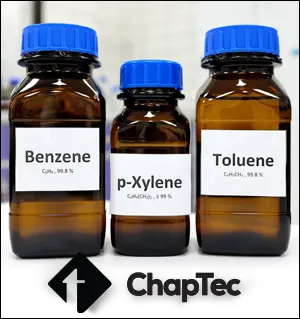XYLENE VS TOLUENE
I learned lately that Europeans don’t know that toluene can be used for clarification in histology and they strictly use Xylene.
As a older lab technologist, I was trained a few decades ago with toluene and only learned later that xylene was also used.
Now xylene is the preferred choice of most labs however toluene is still used sold and used, why?
Of course resistance to change is very strong in histology. If something works, don’t change it! If fact, toluene is very similar to xylene in the results if provides. Some people will tell you that it does a better job of dehydrating without hardening the tissue and that samples can be left in it for up to 12 hours without detrimental effects. Decalcified bone is a good candidate for use with toluene because xylene may render it almost impossible to section
It is also more tolerant for not perfectly dehydrated tissue that still has a little water left. Xylene does not perform well with residual water.
However toluene even though similar to xylene is considered more toxic, has been banned by California’s proposition 65 because it can cause birth defects. It also evaporates faster which can make the smell more annoying. And breathing too much of it can give you a buzz as it can create euphoria!
There are a variety of substitutes out there and if they all have qualities, it sure looks like many will continue using one of these well proven clarifying agents for a while.
| 470, avenue Laurendeau, Montréal-Est (Quebec) H1B 5M2 | |||
| Phone: | 514 498-3620 | Toll free: | 833 498-3620 |
| Email: | chaptec@chaptec.com | ||


